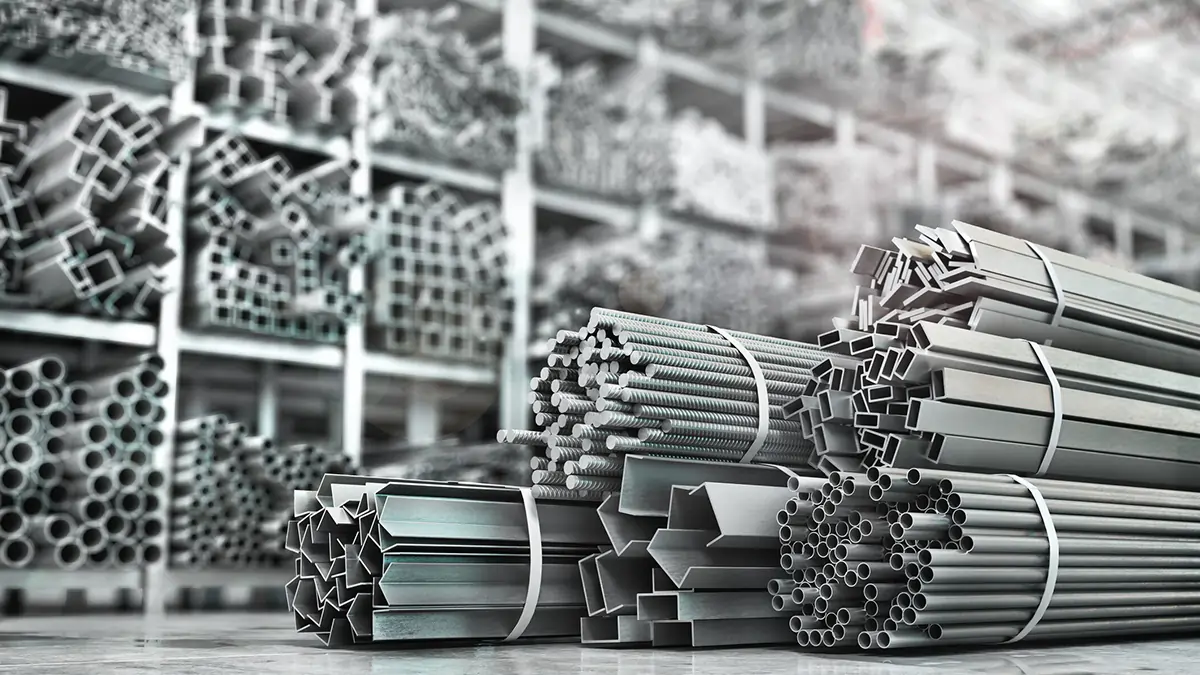The graduated cylinder is one of the most fundamental and widely used instruments in laboratories around the world. Whether you’re conducting a simple classroom experiment, engaging in complex scientific research, or even working in industries like pharmaceuticals and food production, the graduated cylinder is a staple in the measurement of liquids. But what exactly is a graduated cylinder, and why is it so essential?
In this comprehensive guide, we will explore the uses, features, types, and practical tips associated with the graduated cylinder, providing you with a deeper understanding of its importance in various fields.
Table of Contents
ToggleWhat is a Graduated Cylinder?
A graduated cylinder is a cylindrical container used to measure the volume of a liquid. It is typically made of glass or plastic and features marked increments (Graduations) along its side, allowing users to measure the volume of a liquid accurately. Unlike other containers such as beakers or flasks, the Measuring cylinder offers much higher precision and is commonly used in scientific experiments, chemistry labs, and various industrial applications.
Key Features of a Graduated Cylinder:
-
Graduated Marks: The most defining feature of a Measuring cylinder is the series of graduation marks along the side, each representing a specific volume measurement. These marks allow for precise measurements.
-
Narrow Shape: The narrow shape of the cylinder reduces the possibility of errors when reading the meniscus, ensuring more accurate measurements than with wider containers.
-
Material: Most graduated cylinders are made of either glass or plastic. Glass cylinders are preferred in labs for their clarity and chemical resistance. In contrast, plastic ones are more durable and less prone to breaking.
-
Capacity: Graduated cylinders come in various sizes, typically ranging from 10 milliliters (mL) to several liters. The size you choose depends on the amount of liquid you need to measure.
How to Use a Graduated Cylinder
Using a Measuring cylinder is a straightforward process, but there are specific techniques and best practices that can ensure accuracy in your measurements.
1. Positioning the Cylinder
Start by placing the Measuring cylinder on a flat, stable surface. This ensures that the liquid remains evenly distributed within the cylinder and prevents any tilting that could result in incorrect readings.
2. Reading the Meniscus
The meniscus is the curved surface of the liquid, which forms due to the adhesive forces between the liquid and the surface of the cylinder. When reading the volume of a liquid in a Measuring cylinder, always read the measurement at the bottom of the meniscus. This is crucial for ensuring an accurate reading.
3. EAccuracyAccuracy
To improve the precision of your measurement:
-
Use the smallest measuring cylinder that fits the volume of liquid you’re measuring.
-
Always check the cylinder for air bubbles, as these can distort the liquid level.
-
If measuring large volumes, pour the liquid slowly to avoid spilling or splashing.
Types of Graduated Cylinders
There are several variations of the graduated cylinder, each designed for specific uses. Let’s explore some of the common types:
1. Standard Graduated Cylinder
The standard graduated cylinder is the most common and is used for measuring liquids in labs and industrial settings. It typically comes with a broad base for stability and is available in various sizes. The scale is often marked in milliliters (mL) and can be subdivided for greater precision.
2. Tall and Narrow Graduated Cylinder
For more precise measurements, exceptional accuracy is paramount. A tall and narrow Measuring cylinder is preferred. Its shape minimizes the surface area of the liquid, reducing errors caused by parallax (the visual misreading of the liquid level due to an off-angle viewpoint).
3. Single and Double-Scale Graduated Cylinders
Some measuring cylinders come with dual scales, one in milliliters and the other in ounces or other units. These cylinders offer versatility for use in both scientific and culinary settings.
4. Glass vs. Plastic Graduated Cylinders
-
Glass Graduated Cylinders: Glass is highly durable, resistant to chemical corrosion, and allows for a clear view of the liquid inside. It’s typically used in professional laboratories and settings where accuracy is required.
-
Plastic Graduated Cylinders: Plastic cylinders are lightweight, durable, and less prone to breaking. They are often preferred in schools or environments where safety is a concern or in scenarios where the risk of breakage is high.
Applications of the Graduated Cylinder
The Measuring cylinder is indispensable in many fields. Its primary purpose is to provide accurate measurements of liquid volumes, but its versatility extends beyond the lab. Let’s look at how this simple tool is used across different industries and disciplines:
1. In Chemistry and Laboratories
In chemistry labs, precision is key, and the Measuring cylinder is used for accurately measuring the volume of liquids, including chemicals, solvents, and reagents. For example, when preparing solutions or performing titrations, precise liquid measurements are essential to the integrity of the experiment.
2. In Pharmaceuticals
In the pharmaceutical industry, accurate measurement of liquids is critical when preparing medicine and formulations. Pharmacists use measuring cylinders to measure various ingredients, from active ingredients to solvents, ensuring that the correct dosage is achieved.
3. In Food and Beverage
In culinary applications, especially in professional kitchens or food science labs, the Measuring cylinder is used to measure liquids like oils, syrups, and water with precision. For instance, recipes that require specific liquid measurements, such as those used in baking or beverage production, often rely on graduated cylinders to ensure consistency.
4. In Environmental Science
Environmental scientists use graduated cylinders to measure volumes of liquids, such as water samples, when testing for contaminants, pollution, or conducting other ecological analyses. Accurate measurements are crucial when researching water quality, pH levels, and other variables that can affect the environment.
5. In Education and Research
Educational institutions and research labs use graduated cylinders extensively in practical demonstrations and experiments. In schools, teachers use them to teach students about liquid measurement, meniscus reading, and general laboratory techniques.
Key Considerations When Using a Graduated Cylinder
While the Measuring cylinder is a relatively simple tool, there are a few essential considerations to keep in mind to ensure you’re using it correctly and getting the most accurate readings:
1. Understanding the Graduations
The smaller the unit of measurement, the higher the precision. Some measuring cylinders have milliliter increments, while others may be marked in fractions of milliliters. It’s essential to choose a Measuring cylinder with the correct size for the volume you’re working with. For example, using a 1000 mL graduated cylinder to measure 10 mL of liquid can result in less accurate readings than using a smaller cylinder.
2. Temperature Effects
Temperature can affect the volume of liquid. For instance, water expands when heated, so it’s essential to measure liquids at the temperature specified in your experiment. In some cases, temperature adjustments may be needed to compensate for this expansion or contraction.
3. Avoiding Air Bubbles
Air bubbles that cling to the sides of the cylinder can affect the measurement. Ensure that your liquid is free of bubbles by gently tapping the cylinder or swirling the liquid to release any trapped air before reading the level.
Conclusion
The graduated cylinder is a key instrument in the laboratory and various other fields, serving as an essential tool for accurately measuring liquid volumes. With its precise graduations and versatile design, it has earned its place as one of the most reliable tools for scientific, culinary, environmental, and industrial applications. Understanding how to use a Measuring cylinder correctly, including knowing the importance of reading the meniscus and selecting the proper size cylinder, is crucial for obtaining accurate measurements in your work.
As technology and techniques evolve, so does the use of traditional tools like the Measuring cylinder. Whether you’re a student conducting a simple experiment, a professional in the field, or someone involved in high-level scientific research, mastering the Measuring cylinder will ensure that your liquid measurements are as accurate and reliable as possible.
FAQs About the Graduated Cylinder
1. Why is the graduated cylinder more accurate than a beaker?
A graduated cylinder is designed to provide precise measurements, with finer graduations for more accurate volume readings. Unlike beakers, which are often used for rough volume estimates, graduated cylinders are specifically calibrated.
2. Can you measure any liquid with a graduated cylinder?
Yes, you can measure any liquid with a graduated cylinder. Still, it’s essential to ensure that the liquid does not react with the material of the cylinder (e.g., certain chemicals may be incompatible with plastic).
3. What’s the difference between a graduated cylinder and a pipette?
A graduated cylinder is typically used for measuring larger volumes of liquid, while a pipette is used for measuring tiny, precise volumes. Pipettes are more accurate when working with microliters, whereas graduated cylinders are better for milliliters or liters.
4. How do I clean a graduated cylinder?
To clean a Measuring cylinder, rinse it with water, and if needed, use a mild detergent and a brush for stubborn residues. Always dry it thoroughly before using it again, especially if it’s made of glass.
For more information on accurate liquid measurement and laboratory techniques, check out these resources from ScienceDirect and The Lab Depot.






One thought on “The Secret Power of the Graduated Cylinder: Science’s Best Tool”